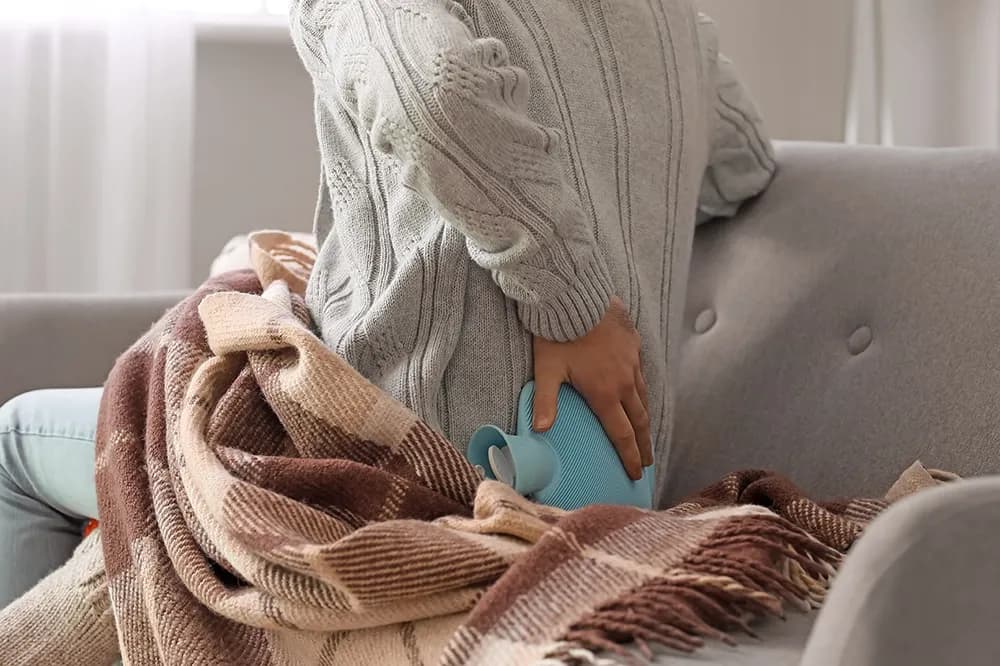Preventing back pain at work
Back pain is a common problem that affects many workers around the world. According to the WHO, back pain affected 619 million people in 2020(1). A more recent study (Global Burden of Disease 2021) even indicates that, in 2021, the prevalence of low back pain among people of working age (15-64 years) was 452.8 million cases, an increase of +52.7% compared to 1990(2).
Whether you sit at a desk all day or perform physical tasks, low back pain can strike at any time. Not only does it affect your well-being, but it can also lead to prolonged work disability. In this article, we will explore the possible causes of back pain at work, which occupations are most at risk, and how to improve your recovery.
Causes of back pain at work
One of the main causes of back pain at work is poor posture(3). Whether you work sitting or standing, maintaining an incorrect position for long periods of time can put excessive pressure on your spine.
In addition, repetitive movements, such as typing on a keyboard or lifting objects, can also contribute to lower back pain.
Stress(3) is often underestimated as a cause of back pain. When a person is stressed, they tend to tense their back muscles, which can lead to pain. Furthermore, physical inactivity and a sedentary lifestyle reduce muscle strength, making the back more vulnerable to injury.
Which professionals are most at risk?
Health and safety at work: an overview of the professions most at risk of back pain.
Every year, we are reminded that work should go hand in hand with good health. How can we be effective if this is not the case?
On 28 April, World Day for Safety and Health at Work is here to remind us of this fundamental principle. It also reminds us that, in reality, many professions are still affected by specific ailments and pathologies.
Back pain is no exception to this problem. According to the French health insurance system, it accounts for 30% of sick leave and costs businesses €1 billion(4) each year. In 2017, this pain resulted in the loss of 12.2 million working days. Based on this data, the CNAM launched a campaign aimed at employers in the same year with the theme: "Do your business good, take action against back pain".
The five sectors most affected by low back pain at work
In fact, two out of three employees have, have had, or will have back pain during their working lives(4). This shows how many people and professions are affected. According to the French health insurance system, five sectors are particularly prone to back pain:
- personal care and assistance,
- transport and logistics,
- commerce,
- waste management,
- construction.
There are many causes of lower back pain: carrying heavy loads, vibrations, manual handling, poor posture, working conditions, stress, etc. In short, the nature of the job itself and the working environment are the main factors contributing to lower back pain in the workplace.

Professional activity... the key to recovery
Paradoxically, returning to work quickly is also the best way to recover from back pain. Studies show that patients recover more slowly from back pain when they remain inactive. On the contrary, they recover more quickly if they return to work soon after.
In fact, there is a direct link between inactivity and the chronicity of low back pain3, which has been demonstrated in numerous studies.
From this point of view, working life is important for healing back pain. It helps people to stay active and keep their back muscles in shape. This is true both during the commute to work and during work itself. It also prevents people from becoming isolated and thus avoids a deterioration in their quality of life - another factor that aggravates low back pain.
Ensure you maintain a good work-life balance. Overworking can increase stress and, as a result, back pain. Take regular breaks and ensure you get enough sleep to allow your body to recover.
Consult a healthcare professional if you have lower back pain
Although these strategies can help reduce lower back pain, it is sometimes necessary to consult a healthcare professional for treatment. If you experience persistent or severe pain, a doctor or physiotherapist can help you identify the underlying causes and develop an appropriate treatment plan.
Preventing back pain at work is essential for maintaining a good quality of life, both professionally and personally. By setting up your workspace correctly, adopting good posture, incorporating regular exercise and managing stress, you can significantly reduce your risk of lower back pain. Remember that prevention is the key to avoiding prolonged absences from work and improving your overall well-being.
By applying these tips, you will be better equipped to manage and prevent back pain at work, allowing you to remain productive and healthy.
Planning your return to work: consider therapeutic part-time work
But it is not a question of abruptly returning to work. The idea is to gradually resume professional activity so as not to aggravate symptoms. The return to work must be planned in coordination with the attending physician and occupational health services from the very beginning of the sick leave in order to organise things as smoothly as possible with the company.
Your employer may offer to adapt or change your workstation. This includes rearranging the space. The aim is to limit risks, such as manual handling and awkward postures. Therapeutic part-time work may also be considered for a temporary period to allow for a gradual return to work.
For more information, consult your doctor.
- World Health Organization: WHO & World Health Organization: WHO. (2023, June 19). Low back pain. https://www.who.int/news-room/fact-sheets/detail/low-back-pain
- Zhang, C., Lv, B., Yi, Q., Qiu, G., & Wu, F. (2025). Global, regional, and national burden of low back pain in working-age population from 1990 to 2021 and projections for 2050. Frontiers in Public Health, 13. https://doi.org/10.3389/fpubh.2025.1559355
- Travail et lombalgie, Institut national de recherche et de sécurité pour la prévention des accidents du travail et des maladies professionnelles, 2018
- Campagne 2018 de l’Assurance Maladie sur le mal de dos dans les entreprises


